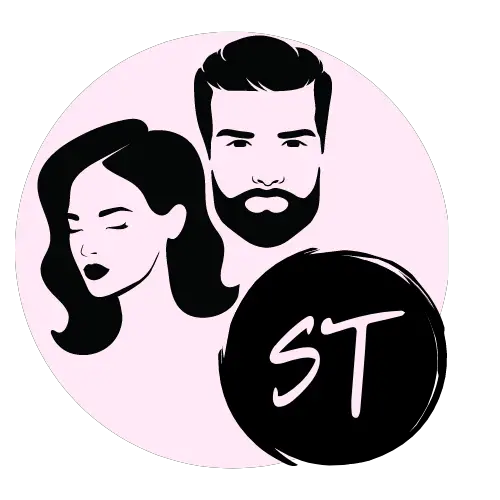I’m Amelia. I have been working with hair care product shampoo and conditioner for 6 long years. This website is an outlet of my deep...Read more
![Peruvian vs Brazilian hair [6 main aspects] 2](https://shampootopics.com/wp-content/uploads/2024/01/2-1024x683.png)
Peruvian and Brazilian hair extensions have become synonymous with quality and style in the beauty business, with each having unique qualities that cater to a wide range of preferences and needs.
Table of Contents
The differences between Brazilian hair and Peruvian hair
![Peruvian vs Brazilian hair [6 main aspects] 3](https://shampootopics.com/wp-content/uploads/2024/01/3-1024x683.png)
Brazilian hair and Peruvian hair are two widely sought-after types of hair extensions known for their quality and versatility.
1. Texture
![Peruvian vs Brazilian hair [6 main aspects] 4](https://shampootopics.com/wp-content/uploads/2024/01/4-1024x683.png)
Peruvian straight hair/Peruvian wavy hair/Peruvian curly hair:
- Wavy, curly, or straight hair texture that is typically known for its softness and silkiness.
- It has a natural appearance and a modest weight.
- This hair texture complements a variety of hair types.
- It is frequently steam curled to obtain the tight wavy pattern.
![Peruvian vs Brazilian hair [6 main aspects] 5](https://shampootopics.com/wp-content/uploads/2024/01/5-1024x683.png)
Brazilian wavy hair/Brazilian straight hair/Brazilian curly hair:
- It is distinguished by its thickness, robustness, and full-bodied texture.
- Brazilian curly hair is naturally curly and has a coarser, bouncy, and voluminous feel.
- Straight, wavy, and curly hair is available in a variety of textures. The most popular hairstyles are Brazilian wavy hair and Brazilian curly hair.
- Brazilian hair shines more than Peruvian hair.
![Peruvian vs Brazilian hair [6 main aspects] 6](https://shampootopics.com/wp-content/uploads/2024/01/6-1024x683.png)
Comparison
Peruvian straight hair/Peruvian wavy hair/Peruvian curly hair tends to be softer and silkier, while Brazilian straight hair/wavy hair is naturally curly and shinier than Indian hair, for example.
Peruvian straight or beautiful wavy hair texture commonly maintains its natural softness regardless of styling, whereas Brazilian might require more maintenance to preserve the natural bouncy hair. However, to develop the tight wavy pattern, you have to steam curl Peruvian hair.
The choice between the two natural hair options often depends on personal preferences for texture, as both offer unique advantages and both will do for African American hair with its curly texture.
2. Color
![Peruvian vs Brazilian hair [6 main aspects] 7](https://shampootopics.com/wp-content/uploads/2024/01/7-1024x683.png)
Peruvian virgin hair:
- Natural colors can range from light brown to dark brown to black.
- It responds well to coloring treatments, allowing for simple dying to obtain a wide range of tints and tones.
![Peruvian vs Brazilian hair [6 main aspects] Peruvian virgin hair 1](https://shampootopics.com/wp-content/uploads/2024/01/Peruvian-virgin-hair-1-1024x683.png)
Brazilian virgin hair:
- Natural dark brown tones are also common, similar to Peruvian hair.
- It is well-known for its ability to retain color, providing brilliant and long-lasting dye results.
![Peruvian vs Brazilian hair [6 main aspects] Brazilian virgin hair](https://shampootopics.com/wp-content/uploads/2024/01/Brazilian-virgin-hair-1024x683.png)
Comparison
Both Peruvian and Brazilian hair begins in natural dark brown hues, offering a wonderful foundation for coloring.
Because of its natural softness, Peruvian hair may be slightly more flexible to color changes, although Brazilian hair may excel at preserving color brightness.
3. Durability
![Peruvian vs Brazilian hair [6 main aspects] 10](https://shampootopics.com/wp-content/uploads/2024/01/10-1024x683.png)
Peruvian virgin hair:
- Peruvian natural hair is noted for its strength and tenacity.
- Thinner and lighter in general, but still strong.
- Even after several washes and heat styling, the quality remains.
Brazilian virgin hair:
- The structure is thicker and more robust.
- It may endure handling and styling slightly better because of its thickness.
- Can withstand heat styling and coloring treatments reasonably well.
Comparison
Despite being thinner, Peruvian hair retains its toughness and can handle regular styling and care.
Brazilian hair, due to its thickness, may be able to withstand more aggressive styling and chemical treatments.
Both varieties have strong overall longevity but may have various maintenance regimes depending on styling preferences and handling.
4. Styling versatility
![Peruvian vs Brazilian hair [6 main aspects] 11](https://shampootopics.com/wp-content/uploads/2024/01/11-1024x683.png)
Peruvian virgin hair:
- With its natural softness and manageability, it provides tremendous styling versatility.
- It holds curls beautifully and is easily straightened.
- Because of its lightweight and smooth texture, it is ideal for a variety of hairstyles.
![Peruvian vs Brazilian hair [6 main aspects] Peruvian virgin hair styling](https://shampootopics.com/wp-content/uploads/2024/01/Peruvian-virgin-hair-styling-1024x683.png)
Brazilian virgin hair:
- Highly adaptable and works well with a variety of style techniques.
- Effectively holds curls, waves, and straight styles.
- It is well-known for its volume and full-bodied texture, which allows for a wide range of styling possibilities.
![Peruvian vs Brazilian hair [6 main aspects] Brazilian virgin hair styling](https://shampootopics.com/wp-content/uploads/2024/01/Brazilian-virgin-hair-styling-1024x683.png)
Comparison
Peruvian hair, with its natural softness and silkiness, lends itself more easily to straightening and may require less heat for styling.
Brazilian hair is great for retaining curls and elaborate designs that require more body due to its thicker structure and volume.
Both varieties provide excellent variety, but the choice is dependent on desired styles and the amount of upkeep required for various looks.
5. Maintenance and care
![Peruvian vs Brazilian hair [6 main aspects] 14](https://shampootopics.com/wp-content/uploads/2024/01/14-1024x683.png)
Peruvian virgin hair:
- Because of its innate softness and silkiness, it requires little upkeep.
- To keep its brilliance and texture, only a small amount of product is needed.
- It is more prone to tangling, although good care can alleviate this problem.
![Peruvian vs Brazilian hair [6 main aspects] Peruvian virgin hair care](https://shampootopics.com/wp-content/uploads/2024/01/Peruvian-virgin-hair-care-1024x683.png)
Brazilian virgin hair:
- Because of its heavier texture and volume, it may necessitate a little more upkeep.
- Conditioning and moisturizing regularly are required to maintain its natural sheen and avoid dryness.
- When compared to Peruvian hair, it has greater resistance to tangling and frizz.
![Peruvian vs Brazilian hair [6 main aspects] Brazilian virgin hair care](https://shampootopics.com/wp-content/uploads/2024/01/Brazilian-virgin-hair-care-1024x683.png)
Comparison
Peruvian hair requires less product upkeep but may require more effort to prevent tangling.
Brazilian hair takes more treatment but is more resistant to tangling and frizz.
6. Pricing and availability
![Peruvian vs Brazilian hair [6 main aspects] 17](https://shampootopics.com/wp-content/uploads/2024/01/17-1024x683.png)
Peruvian virgin hair:
- Because of their increased popularity and perceived quality, they are frequently priced slightly higher.
- Availability varies based on the provider, with some places having less stock than Brazilian hair.
![Peruvian vs Brazilian hair [6 main aspects] Peruvian virgin hair pricing](https://shampootopics.com/wp-content/uploads/2024/01/Peruvian-virgin-hair-pricing-1024x683.png)
Brazilian virgin hair:
- Brazilian hair, as it is more established in the market, has a wider range of availability and pricing points.
- Frequently available in a variety of textures and lengths, giving consumers more alternatives to fit their budget.
![Peruvian vs Brazilian hair [6 main aspects] Brazilian virgin hair pricing](https://shampootopics.com/wp-content/uploads/2024/01/Brazilian-virgin-hair-pricing-1024x683.png)
Comparison
Peruvian hair may be more expensive due to increased demand and perceived quality, making it significantly less accessible.
Because Brazilian hair is more widely available, buyers have more options in terms of textures, lengths, and price points.
Brazilian hair, on average, has more variety selections and price ranges than Peruvian hair.
Addressing misconceptions
![Peruvian vs Brazilian hair [6 main aspects] 20](https://shampootopics.com/wp-content/uploads/2024/01/20-1024x683.png)
Misconception: Peruvian hair is always softer and superior to Brazilian hair.
Reality: the superiority of one over the other is subjective and depends on personal preferences for texture and styling.
Misconception: Brazilian hair is always thicker and more durable than Peruvian hair.
Reality: while Brazilian hair is generally thicker, the choice between the two depends on individual preferences for thickness and desired hairstyles.
Misconception: all Peruvian or Brazilian hair available in the market is authentic.
Reality: the authenticity of the hair depends on the sourcing practices of the supplier, and not all products labeled as Peruvian or Brazilian hair may be genuine.
Authenticity and sourcing
![Peruvian vs Brazilian hair [6 main aspects] 21](https://shampootopics.com/wp-content/uploads/2024/01/21-1024x683.png)
Authenticity concerns: it’s crucial to verify the authenticity of Peruvian and Brazilian hair by purchasing from reputable suppliers with transparent sourcing practices.
Sourcing verification: consumers should research suppliers who prioritize ethical sourcing, ensuring fair compensation for donors and transparent supply chains.
Quality assurance: trustworthy suppliers often provide detailed information about the sourcing process, enabling consumers to make informed decisions regarding authenticity and quality.
Conclusion
The choice between Peruvian vs Brazilian hair ultimately boils down to personal preferences, needs, and an understanding of the nuanced characteristics.
FAQ
Below are the frequently asked questions surrounding popular human hair extensions.
Which is better between Brazilian and Peruvian hair?
The choice between Brazilian and Peruvian hair depends on personal preferences for hair texture, styling, and hair types. Both types offer unique qualities that cater to different needs.
Is Peruvian hair real human hair?
Yes, authentic Peruvian hair extensions are made from real human hair sourced from donors in Peru. However, it’s essential to verify the authenticity and sourcing practices of reputable suppliers.
Which is better Brazilian or Malaysian hair?
Choosing between Brazilian and Malaysian hair depends on individual preferences. Brazilian hair is known for its thickness and versatility, while Malaysian hair is generally smoother and silkier.
How long does Peruvian hair last?
Well-cared-for Peruvian hair wigs and extensions can typically last between six months to a year or longer, depending on how it’s maintained and styled.

I’m Amelia. I have been working with hair care product shampoo and conditioner for 6 long years. This website is an outlet of my deep passion for hair, Shampoo and Conditioner. Basically, I'm here to guide you on shampoo and conditioner.

![Peruvian vs Brazilian hair [6 main aspects] Peruvian vs Brazilian hair. Addressing misconceptions 2024](https://shampootopics.com/wp-content/uploads/2024/01/1.png)